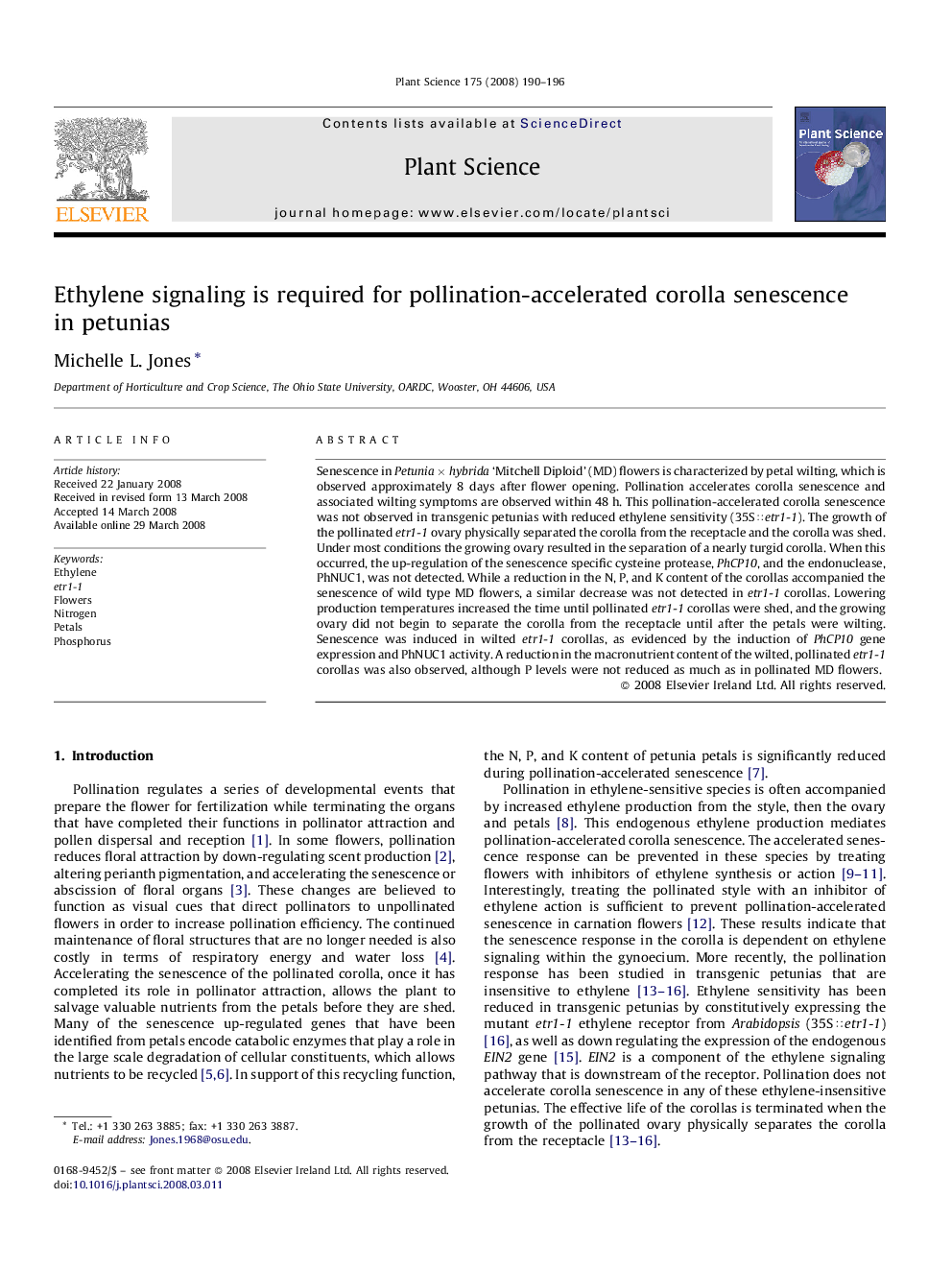| Article ID | Journal | Published Year | Pages | File Type |
|---|---|---|---|---|
| 2018358 | Plant Science | 2008 | 7 Pages |
Senescence in Petunia × hybrida ‘Mitchell Diploid’ (MD) flowers is characterized by petal wilting, which is observed approximately 8 days after flower opening. Pollination accelerates corolla senescence and associated wilting symptoms are observed within 48 h. This pollination-accelerated corolla senescence was not observed in transgenic petunias with reduced ethylene sensitivity (35S∷etr1-1). The growth of the pollinated etr1-1 ovary physically separated the corolla from the receptacle and the corolla was shed. Under most conditions the growing ovary resulted in the separation of a nearly turgid corolla. When this occurred, the up-regulation of the senescence specific cysteine protease, PhCP10, and the endonuclease, PhNUC1, was not detected. While a reduction in the N, P, and K content of the corollas accompanied the senescence of wild type MD flowers, a similar decrease was not detected in etr1-1 corollas. Lowering production temperatures increased the time until pollinated etr1-1 corollas were shed, and the growing ovary did not begin to separate the corolla from the receptacle until after the petals were wilting. Senescence was induced in wilted etr1-1 corollas, as evidenced by the induction of PhCP10 gene expression and PhNUC1 activity. A reduction in the macronutrient content of the wilted, pollinated etr1-1 corollas was also observed, although P levels were not reduced as much as in pollinated MD flowers.
